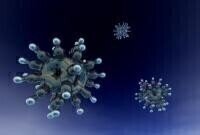-
 Electrophoretic quantitative analysis of UTMD finds applications in gene therapy
Electrophoretic quantitative analysis of UTMD finds applications in gene therapy
Electrophoretic Separations
Quantitative analysis finds UTMD raises in vivo tissue transfection
Nov 25 2010
According to the scientists behind the project, UTMD is capable of significantly raising the levels of tissue transfection achieved in vivo during gene therapy procedures.
With polyethylenimine (PEI) present in tumour xenografts, the link between UTMD and increased transfection can be measured at significant levels, the team write in their report.
They undertook the experiment because "non-invasive and tissue-specific technologies of gene transfection would be valuable in clinical gene therapy", using electrophoresis to carry out the quantitative analysis of UTMD and PEI's combined impact.
Research on the project was carried out by a team at the Third Affiliated Hospital of Guangzhou Medical University in China.
The open-access Journal of Experimental & Clinical Cancer Research disseminates studies on basic, translational and clinical aspects of oncology care.
Digital Edition
Chromatography Today - Buyers' Guide 2022
October 2023
In This Edition Modern & Practical Applications - Accelerating ADC Development with Mass Spectrometry - Implementing High-Resolution Ion Mobility into Peptide Mapping Workflows Chromatogr...
View all digital editions
Events
Jan 20 2025 Amsterdam, Netherlands
Feb 03 2025 Dubai, UAE
Feb 05 2025 Guangzhou, China
Mar 01 2025 Boston, MA, USA
Mar 04 2025 Berlin, Germany













